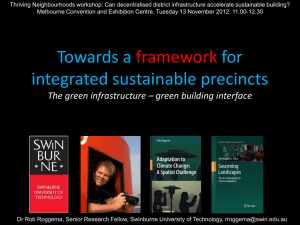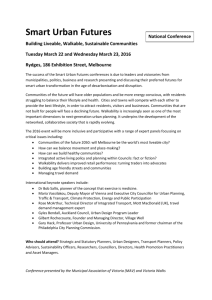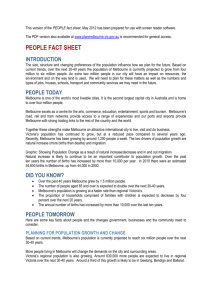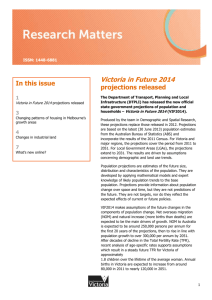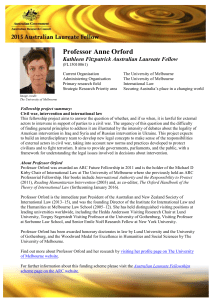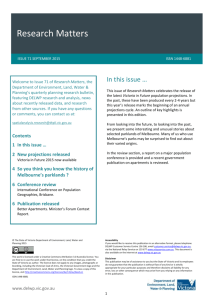Plan Melbourne by Numbers (DOC
advertisement
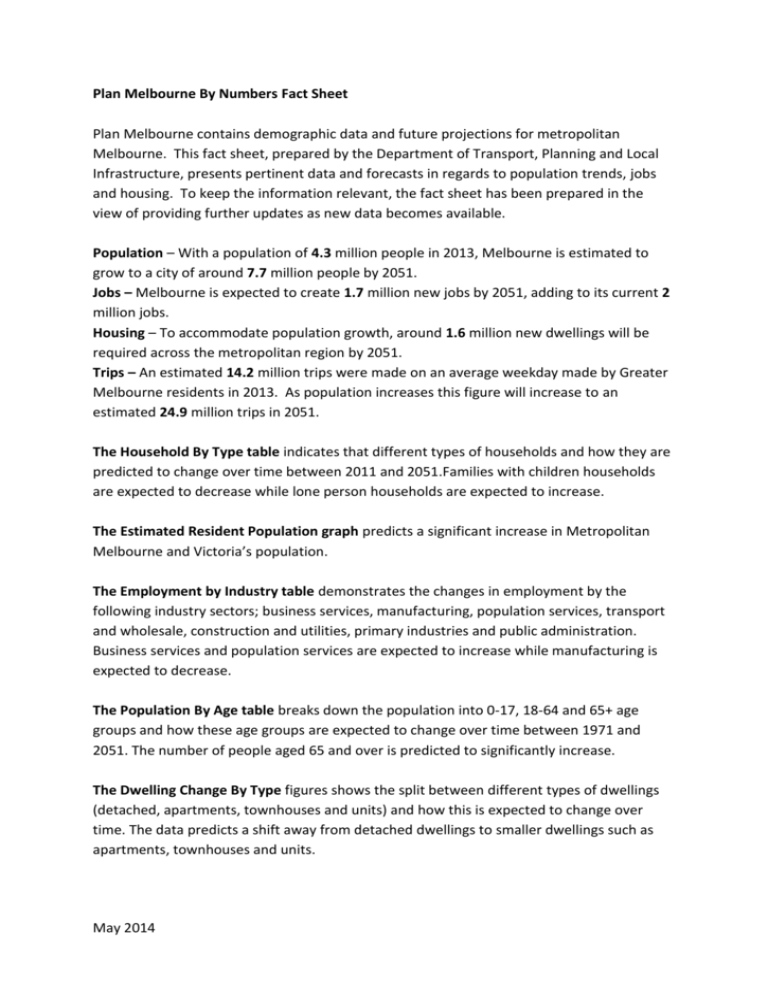
Plan Melbourne By Numbers Fact Sheet Plan Melbourne contains demographic data and future projections for metropolitan Melbourne. This fact sheet, prepared by the Department of Transport, Planning and Local Infrastructure, presents pertinent data and forecasts in regards to population trends, jobs and housing. To keep the information relevant, the fact sheet has been prepared in the view of providing further updates as new data becomes available. Population – With a population of 4.3 million people in 2013, Melbourne is estimated to grow to a city of around 7.7 million people by 2051. Jobs – Melbourne is expected to create 1.7 million new jobs by 2051, adding to its current 2 million jobs. Housing – To accommodate population growth, around 1.6 million new dwellings will be required across the metropolitan region by 2051. Trips – An estimated 14.2 million trips were made on an average weekday made by Greater Melbourne residents in 2013. As population increases this figure will increase to an estimated 24.9 million trips in 2051. The Household By Type table indicates that different types of households and how they are predicted to change over time between 2011 and 2051.Families with children households are expected to decrease while lone person households are expected to increase. The Estimated Resident Population graph predicts a significant increase in Metropolitan Melbourne and Victoria’s population. The Employment by Industry table demonstrates the changes in employment by the following industry sectors; business services, manufacturing, population services, transport and wholesale, construction and utilities, primary industries and public administration. Business services and population services are expected to increase while manufacturing is expected to decrease. The Population By Age table breaks down the population into 0-17, 18-64 and 65+ age groups and how these age groups are expected to change over time between 1971 and 2051. The number of people aged 65 and over is predicted to significantly increase. The Dwelling Change By Type figures shows the split between different types of dwellings (detached, apartments, townhouses and units) and how this is expected to change over time. The data predicts a shift away from detached dwellings to smaller dwellings such as apartments, townhouses and units. May 2014 The Dwelling Change By Area figures display the predicted location of new dwellings; central city and surrounds, balance of established suburbs and growth areas. The data indicates most growth will occur in established areas. The Plan Melbourne By Numbers map indicates the existing and estimated population and jobs growth and dwelling requirements by subregion. Find Out More View our website: www.planmelbourne.vic.gov.au Email us on: planmelbourne@dtpli.vic.gov.au Victorian Government Contact Centre 1300 366 356 Translation Service 131 450. Data disclaimer The State of Victoria does not warrant the accuracy or completeness of information in this publication and any person using or relying upon such information does so on the basis that the State of Victoria shall bare no responsibility or liability whatsoever for any errors, faults, defects or omissions in the information. May 2014




